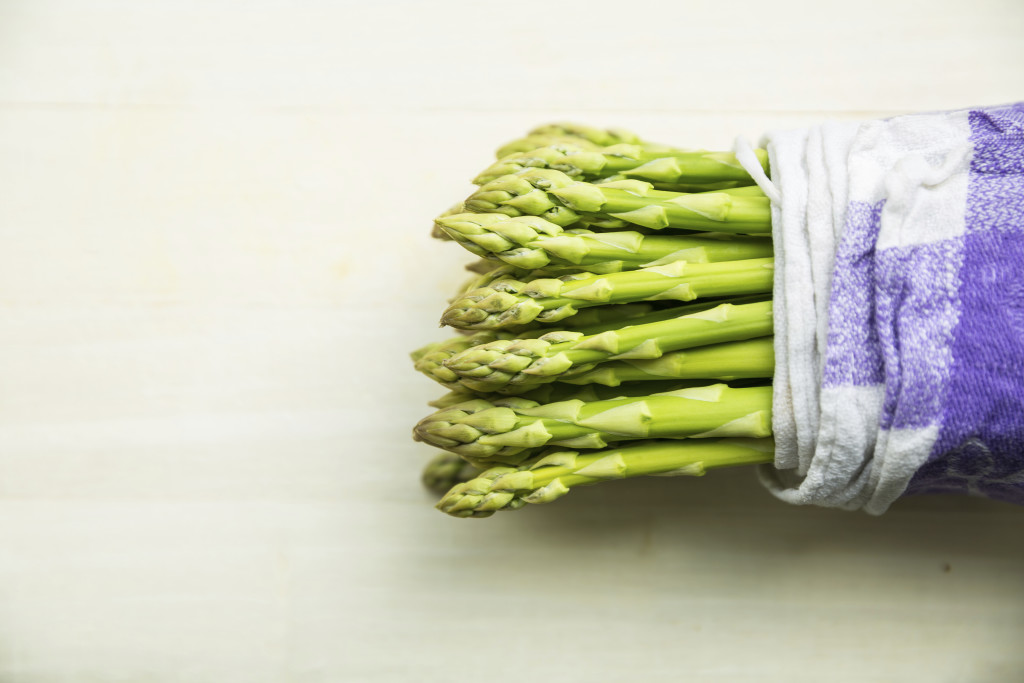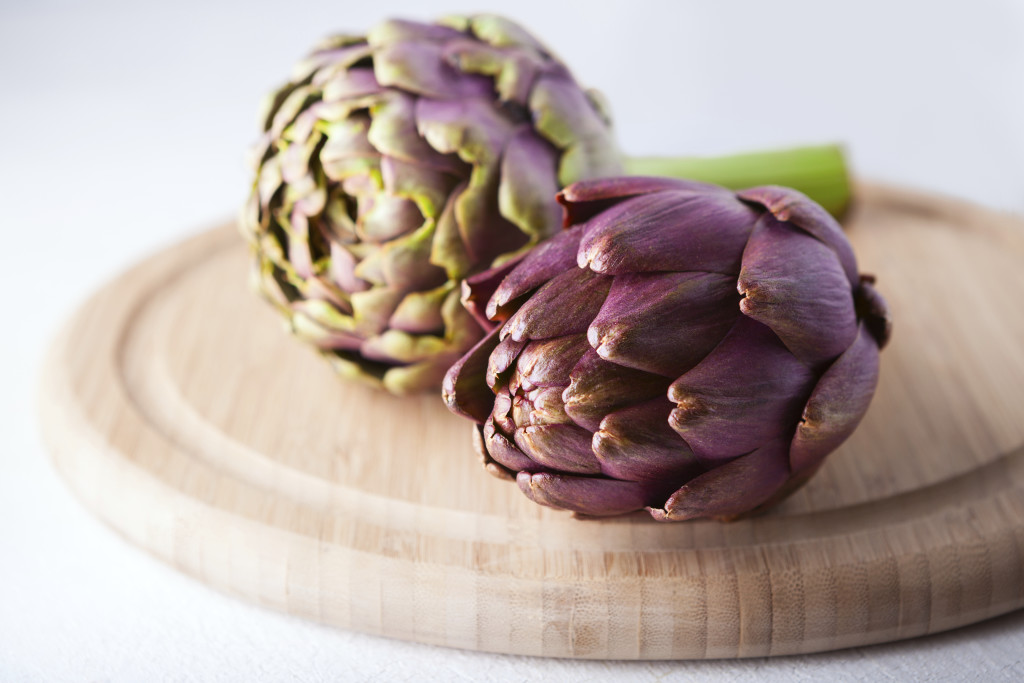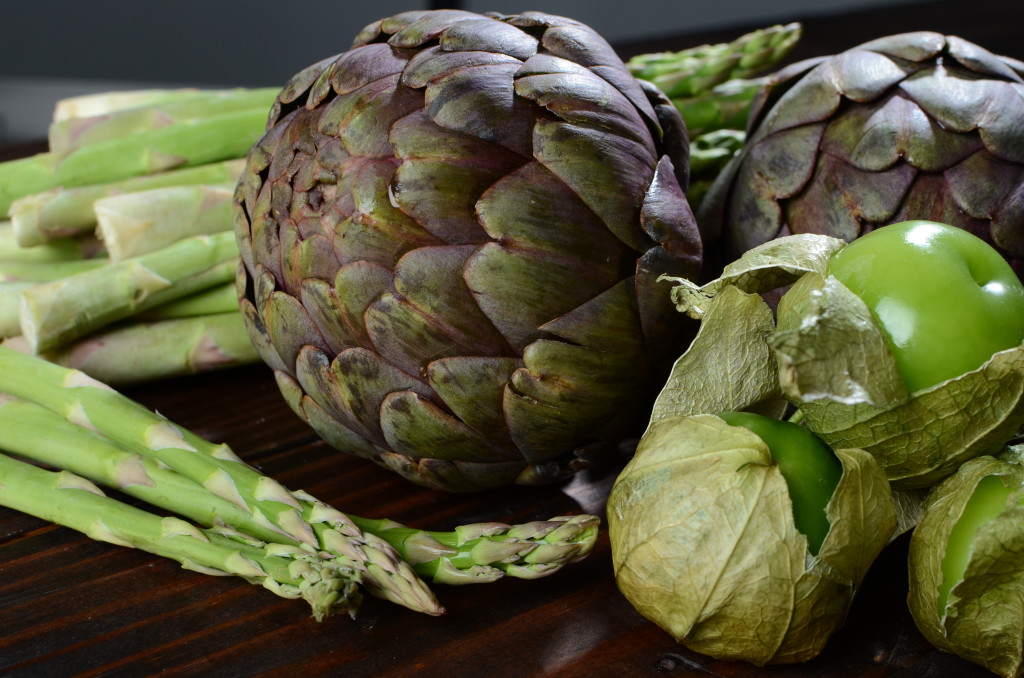By: Alex Charpentier, Culinary Arts Student
If you are like me the warmer weather makes you want to eat more fruits and vegetables. Not just because of the rapid approach of swimsuit season, but because our bodies biologically crave fresh, light natural foods from the garden as it starts to get warmer outside.
At the Escoffier School of Culinary Arts in Austin the Farm to Table culinary staff and Garden Club members, spearheaded by Chef Natalie cultivate and harvest a variety of fruits and vegetables including two of my favorites: artichokes and asparagus. These vegetables are freshest in the spring and summer and can be used as an appetizer, side dish or as a primary component to a main dish like pasta or a soufflé. Regardless of what you choose to prepare with these vegetables, what is most important about preparing asparagus and artichokes is properly prepping them prior to cooking.
As I am learning in culinary school, when it comes to cooking, preparation is 90% and execution is 10%. Both of these wonderful vegetables can be cooked using a variety of cooking techniques ranging from grilling to roasting or sautéing and can be served with a simple vinaigrette or simple hollandaise or aioli or in a pasta or rice dish. I grew up in a French family and we tended to eat our vegetables cold in salads with vinaigrette that included garlic or shallots, some kind of nuts and some form of cheese.
Here are a few recipes that I love to help you enjoy them this summer.
Prepping Asparagus
Asparagus can be thin or thick. Thin asparagus is tender with a slightly crisp center, while thick asparagus has more of a meaty center, more crunch and texture. For thick asparagus spears you need to peel off the outside part about 2 inches up from the stem end with a vegetable peeler. Then, snap off the base of each spear by bending the spear a few times to find a place where it breaks easily. This is usually around the bottom third of the spear and where it starts to turn tender. Scrape off the scales on the spears with a vegetable peeler, which will give the spears a smooth, clean look and is beneficial for tough, fat spears.
Roasted Asparagus
Yields 4 servings
1 pound of asparagus (thick or thin, prepped according to instructions above)
1 – 2 tablespoons of olive oil, enough to coat the asparagus
Kosher or Sea salt and fresh ground pepper to taste
1 tablespoon of lemon zest
1 teaspoon of fresh lemon juice
Fresh herbs of your choice from the garden
Preheat the oven to 450 degrees F. Place asparagus in a large bowl and toss with olive oil, lemon juice, salt and pepper. Place on a baking sheet and roast, uncovered, about 15 minutes or until crisp-tender, turning them twice with a pair of tongs during roasting. Once removed, toss them in a clean bowl with the lemon zest and herbs, adding more salt and pepper to season as needed. You can also add a shaved hard Italian cheese atop the asparagus prior to serving and also serve with simple balsamic vinaigrette on the side made from olive oil and vinegar or any dressing of your choosing.

Prepping an artichoke
Rinse your artichoke well under cold water. With a sharp, serrated kitchen knife, cut about one inch from the top of the Artichoke. Then, trim the stem about one half-inch removing small touch petals. You can also use kitchen shears to remove these. Finally, rub the cut portions of the artichoke with the juice of a fresh lemon to prevent it from browning.
Steamed Artichoke
Yields 4 servings
2 whole artichokes (prepared according to the instructions above)
4 sprigs parsley
4 garlic cloves
2 bay leaves
2 lemons cut in half
1/4 cup white wine
2 tablespoons olive oil
1-quart water
Kosher or Sea salt and fresh ground pepper to taste
Lemon butter – melt ¼ cup of butter, add 1 tablespoon of lemon
Vinaigrette – combine ¼ cup oil, 2 tablespoons red wine vinaigrette, 1 teaspoon Dijon mustard and 1 teaspoon shallots, salt and pepper to taste whisk until emulsified.
Steamed artichokes may be served hot or cold.
Place the parsley, garlic, bay leaves, lemons, wine, oil and water in a large pot and bring to a simmer. Season with salt and pepper. Place the artichokes in the steaming liquid, bottom up. Cover and simmer for about 30 minutes. The artichokes are done when a knife is inserted into the base and there is no resistance.
To eat, pull off a leaf and scrape the meat off the tender end with your front teeth, dipping it into a lemon butter sauce or a Dijon mustard shallot vinaigrette (recipes above).
Do not eat the center cone of purple prickly leaves, they protect the heart and you should scrape away the thistle fuzz covering the artichoke heart before eating it. The heart is the best part of the artichoke, enjoy!





